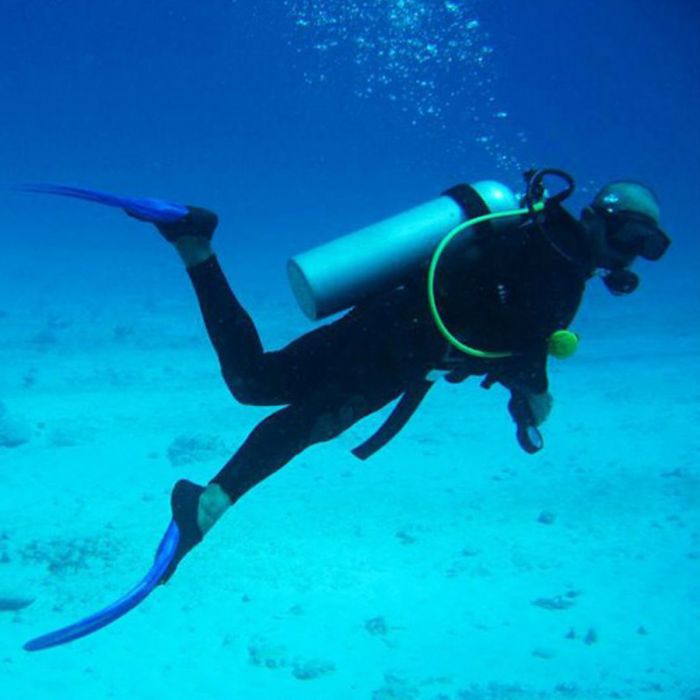Operating at sea presents unique challenges and hazards that require careful planning and specialized equipment. One of the most crucial pieces of safety equipment onboard a vessel is the breathing apparatus. Whether used for firefighting, entering enclosed spaces, or other emergency situations, the breathing apparatus is essential for protecting seafarers from hazardous environments. Below, we explore the key safety protocols for effectively using breathing apparatus at sea to ensure safety and efficiency.
1. Overview of Breathing Apparatus
A breathing apparatus, often referred to as a Self Contained Breathing Apparatus set (SCBA), provides a continuous supply of breathable air to the user, allowing them to work safely in environments that may be oxygen-deficient or filled with harmful gases. This equipment is critical in maritime settings for emergency scenarios such as fire, gas leaks, or entering confined spaces.
2. Importance of Training and Certification
The importance of thorough training cannot be overstated. Only trained and certified personnel should use a breathing apparatus at sea. Training involves understanding the components of the apparatus, how to correctly don and adjust it, and how to monitor air supply. Users should be comfortable with all safety procedures, including emergency maneuvers, to ensure they can respond appropriately in an actual emergency.
The International Convention for the Safety of Life at Sea (SOLAS) mandates crew members undergo proper training, including practical drills. These drills familiarize users with the operation of breathing apparatus in real-life scenarios, such as fighting onboard fires or carrying out rescue missions in confined spaces.
3. Conducting Pre-Use Equipment Inspections
Before donning the breathing apparatus, it is essential to conduct a thorough inspection of the equipment. This includes:
- Checking Cylinder Pressure: Ensure the air cylinder is fully charged, typically at a pressure of 200-300 bar. Low-pressure cylinders should be recharged before use.
- Inspecting Hoses and Connections: Check that hoses and connections are secure, without any signs of wear, leaks, or damage.
- Testing the Mask Seal: The face mask must create an airtight seal to prevent the ingress of toxic gases. Users should perform a fit test to confirm the mask is secure.
- Verifying Alarm Systems: Many breathing apparatus sets include a low-pressure warning alarm. Ensure that this alarm functions correctly to alert the user when air levels are running low.
4. Proper Procedures for Donning the Apparatus
Wearing the breathing apparatus correctly is crucial for safety. The following steps should be adhered to:
- Secure the Harness: Position the harness comfortably on your back and fasten all straps to ensure the apparatus does not shift during use.
- Fit the Face Mask: Place the face mask over the nose and mouth, tightening the straps evenly to form a secure seal. Conduct a leak test by covering the exhalation port and breathing in to ensure no air enters.
- Check the Air Supply: Open the valve slowly to release air, ensuring that airflow is steady. Monitor the pressure gauge throughout the operation.
5. Team Coordination and Communication Protocols
Working in hazardous environments at sea often involves more than one person, making communication and coordination vital. Team members should use clear hand signals or communication devices to stay in contact. Establishing a clear entry and exit plan, including designated time intervals for monitoring air supply, helps ensure all team members remain safe and aware of each other’s status.
It is also advisable to have a standby team ready to provide immediate assistance in case of an emergency. The standby team should also be equipped with breathing apparatus and be ready to intervene if required.
6. Monitoring and Managing Air Supply
Running out of air while using a breathing apparatus can be life-threatening. Always monitor the pressure gauge throughout the operation, and set a point at which you will begin the exit process—usually when the air supply reaches one-third of its capacity. This ensures enough time to safely return to a breathable environment before the air is depleted.
7. Post-Operation Equipment Care
After using the breathing apparatus, it is crucial to clean, inspect, and store it correctly:
- Clean the Face Mask: Wash the face mask with mild detergent to remove contaminants and prevent skin irritation.
- Inspect for Damage: Look for signs of wear or damage to any part of the apparatus. Any damaged components should be repaired or replaced immediately.
- Refill the Air Cylinder: Recharge the air cylinder to ensure it is ready for the next use. It is a best practice to maintain all equipment in a fully operational state at all times.
8. Routine Maintenance and Periodic Checks
Regular maintenance of breathing apparatus is key to ensuring its reliability in emergencies. Periodic checks, as recommended by the manufacturer, should be carried out by qualified personnel. This includes testing pressure relief valves, inspecting seals and hoses, and calibrating alarms.
Conclusion
Using a breathing apparatus at sea is critical for managing hazardous situations, such as fire outbreaks or rescue operations in confined spaces. Adhering to proper safety protocols—including pre-use inspections, correct donning, continuous monitoring, and regular maintenance—ensures the safety and effectiveness of this life saving appliances on ship. Well-trained crew members, regular drills, and rigorous equipment checks form the foundation of safe and efficient use of breathing apparatus at sea. By following these protocols, seafarers can effectively protect themselves and their colleagues from life-threatening hazards in challenging maritime environments.


